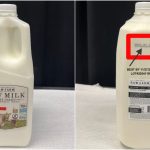Today’s interview features Kashif Khan, founder and CEO of The DNA Company, which analyzes your DNA and keeps your data private, unlike 23andMe and other companies that sell your genetic data to third parties like drug companies.
Our discussion here is not about DNA analysis, however, but rather endotoxin and mycotoxin, which can play an important role in many chronic degenerative diseases, and estrogen excess, which can produce symptoms identical to endotoxin. Khan is quite knowledgeable in this area.
“The biggest area where we’re seeing a flood of people coming in, is in the female health world,” Khan says. “Not that this is an answer for everybody, but what we’re seeing is that all these women are concerned about how they feel and it’s been labeled as an endotoxin problem.
We’re diving in and seeing that about 30% of them are misdiagnosed. It’s actually an estrogen problem. They have the same symptoms, same complaints, same everything. We know that endotoxins are a concern, and so that concern is being taught in functional medicine … Mycotoxins are also being misdiagnosed.
So, a big area we end up supporting and helping is actually looking at the hormone pathway and seeing what toxic hormones are people making. This is one piece of the conversation, it’s one slice, but it’s a big slice where the most help is needed …
Whether it’s men producing DHT that’s causing inflammation, or women producing 4-hydroxy estrogen or 16-hydroxy estrogen as this constant trickle of inflammation, representing the same symptoms, same everything, they’re just not getting help. They’re not getting fixed because that’s what’s actually driving the symptoms. And we keep seeing this over and over again.”
What Are Endotoxin and Mycotoxin?
Endotoxin, also known as lipopolysaccharide (LPS), is produced by gram-negative bacteria in your gut. When complex carbs aren’t digested in your stomach, they travel down to the intestine where they feed these bacteria, and as the bacteria grow, multiply and die, the bacteria release LPS, which can result in leaky gut, allergic reactions, organ dysfunction and even sepsis.
Endotoxin also catalyzes a series of metabolic reactions that convert tryptophan in your gut to serotonin. Most people think serotonin is good, but mostly, especially higher levels, it is not good for your health. You do not want high levels of serotonin because it’s an antimetabolite.
This means it suppresses your body’s ability to create energy in your mitochondria in the electron transport chain, so you become tired and fatigued, your metabolic rate slows and you gain weight.
While endotoxin typically is related to gram-negative bacteria, mycotoxin is generated by things like fungi and yeast, such as candida. Mycotoxin such as mold can also have a volatile organic compounds (VOCs) aspect to it. This is the smell or odor, which can make you sick all by itself.
Toxic Reservoirs Must Be Addressed
As explained by Khan, when it comes to endotoxin and mycotoxin, it’s important to realize that you likely have a reservoir of toxin-producing bacteria in your system that will continue causing problems for as long as you keep feeding them. What’s more, within the metabolic pathway of endotoxin, a gene expression change occurs that is triggered by nutrition or environment.
“That triggers production of enzymes and proteins like amylase and cellulase to then convert the fuel that they’re consuming into the building blocks of the ensuing toxins, like mycotoxins, for example,” Khan explains.
“So, you have this internal combustion engine of making more and more, and the genes are being triggered in the actual toxin to make more of the outcome of this inflammatory toxin. And so, it’s happening on the inside too. That’s what people don’t get.
You’re binding and clearing, but if you’re not dealing with innate fungal overgrowth or toxin overload, you’re still making more of it. We often look at the gut as the source of what you need to work on, but it’s not just about what’s coming in. It’s also what you make on the inside. People need to think about that.”
How to Address Endotoxin and Mycotoxin
To address this vicious cycle, you need to heal and seal your gut. Beneficial bacteria, such as bifidobacteria and lactobacillus, and beneficial yeast like Saccharomyces boulardii can help repopulate your gut with beneficial microbes.
Saccharomyces boulardii is frequently prescribed by knowledgeable physicians to individuals who need to take antibiotics, because the saccharomyces are not killed by antibiotics. Intermittent use of binders such as activated charcoal, cholestyramine (a prescription drug), clays and chlorella can also be helpful to clear out some of the endotoxin.
In severe cases, you may even need to use antibiotics to sterilize your gut, although I don’t typically recommend this. Obviously, you also need to reduce the fuel source, so avoid complex carbs and resistant starches.
The strategies for mycotoxin are similar. However, as noted by Khan, most of the mycotoxin you’re exposed to comes from your food, and most of the mycotoxin in food is produced during shipping and storage. Generally, about 10% of the food supply is contaminated at the source, but once it’s reached its destination, the contamination level is 25%. So, to avoid mycotoxin, eating locally-grown food is part of the solution.
Humic and Fulvic Acids Help Clear Intracellular Toxins
If binders and beneficial bacteria and/or yeast don’t do the trick, you may have leaky gut. In that case, your gut also needs to be healed. Signs of leaky gut include constipation or diarrhea, and the route of elimination needs to be fixed before you can start to really move toxins out.
“One really cool thing we’re finding is there’s sometimes solutions that aren’t labeled for a particular problem, but they work. Humic and fulvic minerals are doing a really good job of drawing [out] intracellular [toxins], and healing the cellular membrane, because fulvic minerals have this unique attribute where they have this charge to be able to bring nutrients into the cell.
Once they do that, they flip their charge to draw toxins out. They bring them back out with them. And so, we’re finding people who are taking good minerals are healing much faster, if they’re taking the right stuff, because there’s this double whammy of healing the gut, taking out what’s in the blood, but also intracellular [and] cell membrane-wise.”
You may also need liver and bile support to ensure efficient detox. One thing to remember is that complete healing can take a long time. “It can take two years,” Khan says. “If you’re not just masking a symptom to feel better, it’s going to take time. It’s not a question of weeks.”
Serotonin Toxicity
Getting back to serotonin for a moment, this is a major problem that most people aren’t aware of. There’s a disease process called serotonin syndrome, caused by excess serotonin in the gut. One of the signs of serotonin syndrome is loose stools or diarrhea.
If you’re one of the 40% of adult women in the United States over 40 who are taking an SSRI antidepressant, consider finding a competent physician to help you wean yourself from that drug as soon as possible. There are other safer ways to address depression and anxiety.
Safer, and far more beneficial would be drugs like Benadryl or diphenhydramine, which is an antihistamine. It can block serotonin quite effectively, as can famotidine (Pepsid). Also reduce your intake of tryptophan-rich foods, as tryptophan converts into serotonin. Khan adds:
“When it comes to the serotonin issue, it’s not always about production. It’s more about utilization. We can predict somebody’s genetic propensity to use serotonin. It’s in the length of the receptor. When somebody has the shorter receptor, it’s not that they’re producing less, but they can’t use it. They can’t utilize it efficiently, and so these people are often constantly irritable.
They’re very distractible. It becomes hard for their brain to prioritize a stimulus because they don’t have the right receptor to bind and experience the stimulus as it should be. So, they appear to be irritable and distractible. If things annoy you a lot, if things bother you, if you have trouble staying asleep in the second half of night, those are traits of serotonin dysregulation.”
The Hazards of Estrogen
While estrogen replacement therapy is all the rage, this strategy is likely doing far more harm than good. I strongly recommend avoiding estrogen replacement therapy, even bioidentical, organic estrogen replacement therapy. You can go on other forms of hormone therapy, but not estrogen. Khan explains:
“[Estrogen] is certainly one of our biggest toxic threats today, especially given that you have to think of it contextually. Our context today is not grandma’s context. [Due to] the hormone disruption and estrogen mimics we’re dealing with [today], you already have too much, and you’re adding more through hormone replacement therapy or birth control pills.
So, we’re already in a context where it’s a threat, so you have to pay attention to it. The layers you have to look at are dominance. So, what do I make? Am I more androgenized, am I more estrogenized? And you can predict that through the genes that metabolize each step of the cascade … progesterone to testosterone, to estrogen. What do I do in each one of those steps?
Many women — and men, by the way — are estrogen-dominant and just produce way too much. It’s [due to] a conversion of CYP19A1 to testosterone and estrogen. That’s why aromatase-inhibitor inhibitors work well, because you are just flowing the gene expression down in that one location, and all of a sudden, you have more free flowing testosterone.
By the way, there are three pathways that your estrogens convert into, potentially, before you clear them, and these metabolites are 2-, 4- and 16-hydroxy estrogen. 2-hydroxy estrogen is the good clean stuff you want. 4- and 16-hydroxy estrogen are toxic.
We’ve seen over and over again, when we’re dealing with breast cancer patients, ovarian cancer patients, who were told, ‘You have BRCA, go cut your breasts off.’ And then they’re just getting ovarian cancer instead. Or vice versa. It’s because of this.
So, BRCAs are a repair tool. It’s just supposed to fix things. It doesn’t cause anything. But these two metabolites, the 4 and 16 [are] highly inflammatory, [and] we know all chronic conditions are rooted in inflammation. For men, the 16-hydroxy pathway is closely connected to testicular cancer. In the androgen pathway, dihydrotestosterone fuels prostate cancer.”
Detox and Clearance of Estrogen
To detox estrogen, the same detox pathways used for other toxins also apply here, such as the glutathione pathway, antioxidation, superoxide dismutase and COMT, which is the tail end of methylation. COMT, in particular, is really important for clearing toxic estrogens, whereas glucuronidation deals with some of the androgen toxins.
“If you take a hormone therapy and look at this cascade, what are most women getting? They’re getting estradiol, typically, which converts into 4-hydroxy estrogen, which is a cancer fuel.
If you have a woman who is already teetering on the edge of poor health because she converts into one of these buckets and you give her estradiol, you’ve just given the raw ingredients to fuel this, and then all of a sudden inflammation’s through the roof. And where did this breast cancer come from?
I’m dealing with a family where there’s breast cancer, and a woman that previously had ovarian cancer. And what happened in those two parts of her life? Two years prior to the breast cancer, in menopause, she started her hormone replacement therapy, and she took estradiol …
Keep in mind, in menopause you don’t have a menstrual cycle anymore, so you’re not clearing that toxin. It just gets stored in fat. That’s what your body does with it, which is why you have inflammation in the breast. That’s where you have a lot of fat as a woman.
Take it back a couple of decades, when she had the ovarian cancer, it’s because she was on the birth control pill for eight years. Same thing, she was fueling more estrogen into that bucket that she converted into 4-hydroxy estrogen, which caused ovarian cancer at that time. Same problem. The root is the estrogen dominance and toxicity.
In men, we see things like gynecomastia, loss of libido, hair loss. And you’re seeing that in numbers today more than ever before. There are no manly men. Where did they all go?
We have estrogens in our water. Estrogens don’t break down, they’re like forever chemicals. When a woman flushes her tampon in the toilet or her birth control pill that she peed out and some guy drinks it months later, once it gets past filtration and sanitation, he’s still taking the estrogens in.
They’re still there. The challenge is that the total load just keeps increasing, and we’re all exposed to it. We have to think about not only what we make and who we are, but in the context of this estrogen toxic soup, where it’s everywhere already, so the total load is far too much.”
How to Measure Estrogen Excess
There are two ways to measure or gauge potential estrogen excess. One is to look at your genetics to understand how you metabolize estrogen. The other is to take a standard DUTCH test, which is commonly used to monitor patients on hormone replacement therapy.
Unfortunately, many doctors are not trained on interpreting metabolites. They’re looking at estrogen alone, not understanding that there are genes that metabolize and turn the estrogen into different things.
“We work with a lot of NHL hockey players,” Khan says. “In 2019, a bunch of them were coming to us with man boobs, and we found out there was a new trend of taking this AndroGel pack.
It’s a gel that goes on your stomach. Androgens, testosterone, enters your bloodstream, and the thinking is, ‘I gave you testosterone, you should have more testosterone.’
But … some men had the fast CYP19A1 gene that converts it all into estrogen. So, I gave you testosterone, but your body’s saying, ‘Turn that into estrogen.’ And that’s what you’re doing with it. All those gentlemen needed was an aromatase inhibitor. Just block the estrogen conversion.
That’s where knowing where to intervene in that cascade makes things a lot easier. Most of the time, we already have the raw ingredients, we just need to plug into the right place with the right supplement, either speed something up or slow something down.”
Better Options
I’m not opposed to all hormone replacement therapy. The master precursor hormone, though, is pregnenolone. That is the base hormone that converts to all others, and it’s unlikely to aromatize. The ideal administration route is once a day in a cacao butter suppository. DHEA, which is a male hormone, at 5 to 10 mg can also be added.
Easier, but not as effectively absorbed, would be to swallow it as an oral pill, but it must be taken with a saturated fat to make sure it bypasses liver metabolism. Something like a teaspoon of butter or beef with fat in it would also work.
DHEA can easily aromatize and can form estrogen, which is not a good thing, so you need to be careful about using too much. Those are two base hormones that people can use rather safely. You can also use progesterone, which is anti-estrogen.
The oral route is only about 85% effective with the butter, compared to nearly 100% with the suppository route. Cacao butter works much better than coconut oil, as it is a longer chain saturated fat and does not melt at room temperature. If you do use suppositories, ideally, you should not have a bowel movement for three to four hours after insertion.
Estrogen, aside from increasing intracellular calcium concentration, is also antimetabolic, as it slows down your metabolic rate and inhibits your thyroid function, both of which are bad news. It’s toxic to your body in most cases. It is likely only second to excess LA intake as a factor that increases your risk of cancer.
You do need it sometimes, certainly for reproductive purposes and for wound healing, but most of the time you have more than enough to fill those roles, and it’s just an excess, especially with all the xenoestrogens we’re exposed to in the food supply.
“Menopause is a protective measure,” Khan says. “You’re past the fertility stage of your life and this toxin that you needed for that purpose, you don’t need anymore, so your body naturally goes into a state to protect you by not having so much of it. We break nature and try and maintain it, not understanding why the body does this. It’s to protect you. That’s why you go into menopause.”
More Information
If you’re interested in learning more about gene sequencing and genetic testing, which Khan’s company, The DNA Company, does, please listen to the entire interview. We segue into that toward the end.
We also discuss a new Canadian bill that could potentially eliminate most nutritional supplements on the market. This, even though there has not been a single reported death in Canada from a nutritional supplement since 1965. You can learn more about this bill in “Discussion Paper on 2023 Health Canada Initiatives.”1
Basically, they intend to license supplements as drugs, which means bringing a product to market will end up costing around $250,000 to $500,000. “If you go to your naturopath who’s compounding something … they don’t even sell $20,000 of that product per year, so how are they going to pay $500,000 to get it registered?”
And, there’s no grandfather clause. They intend to do this for all products, including existing ones. The bill has already passed, so now they’re just working on its implementation. As a result of this bill, naturopaths may not be able to remain in business either, since they’ll have virtually nothing to prescribe, other than whole foods. “The intention is to put [supplements] in allopathic health care control,” Khan says.
Perhaps the most important take-home from this dialogue is that we need to be prepared. This is already happening in Canada, which means it probably won’t be long before the same kind of legislation shows up in the U.S. When it does, we have to be prepared to push back with all our might.
In closing, if you’re interested in getting genetic testing, go to thednacompany.com/Mercola for 15% (the discount will show at checkout). If you just want to learn more, visit theDNAway.com. There you can also learn more about Khan’s book, “The DNA Way.” You can also follow him on Instagram.






